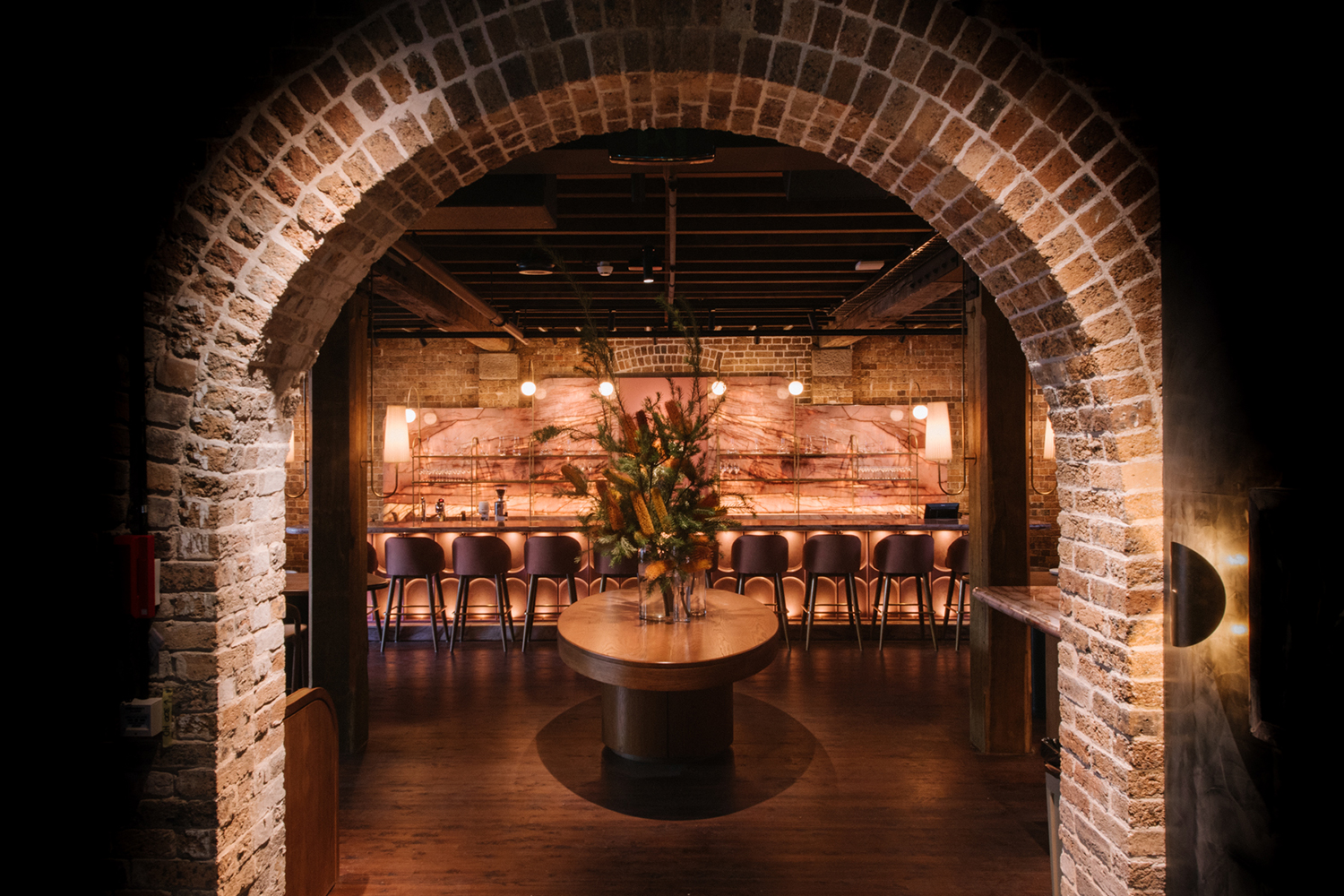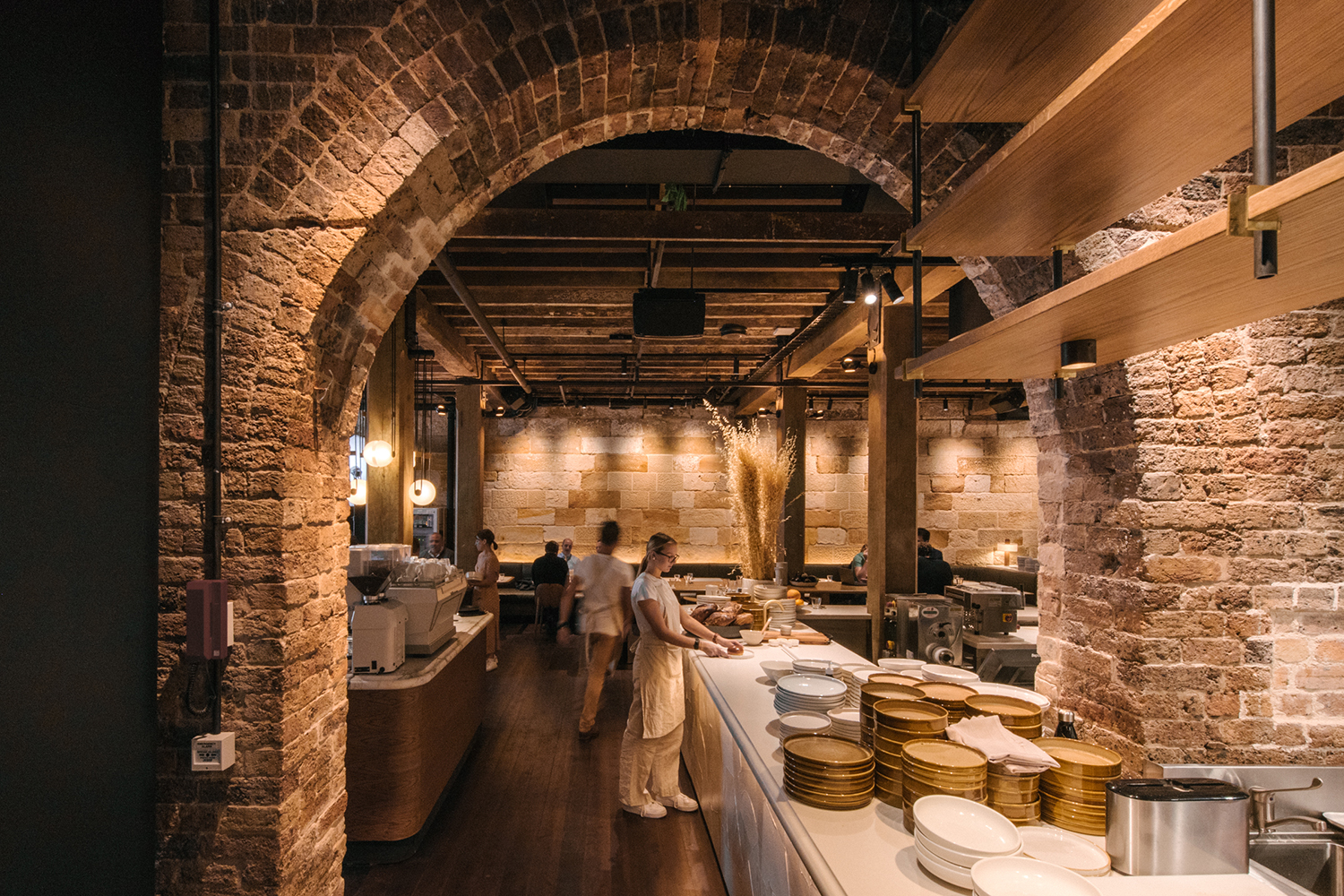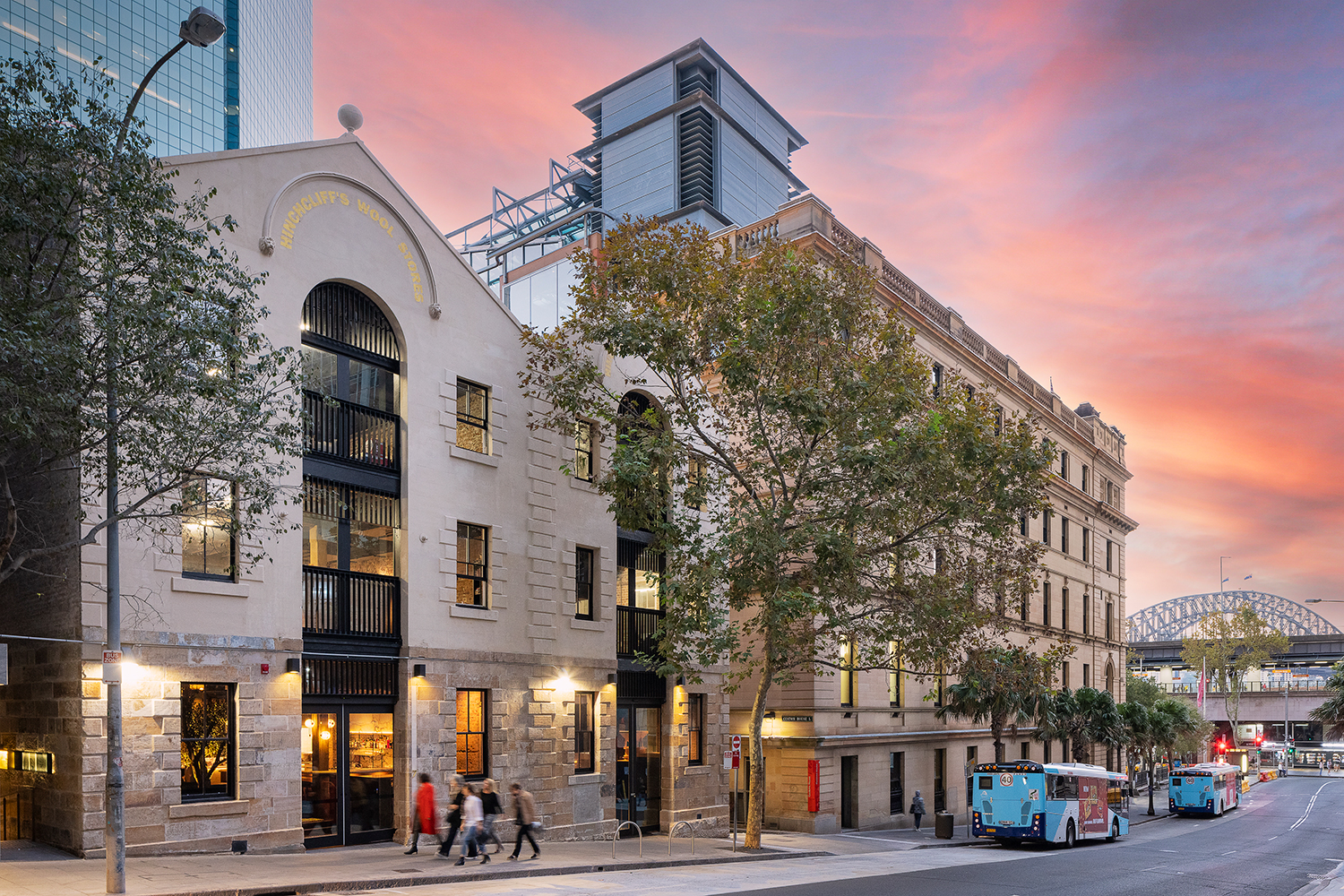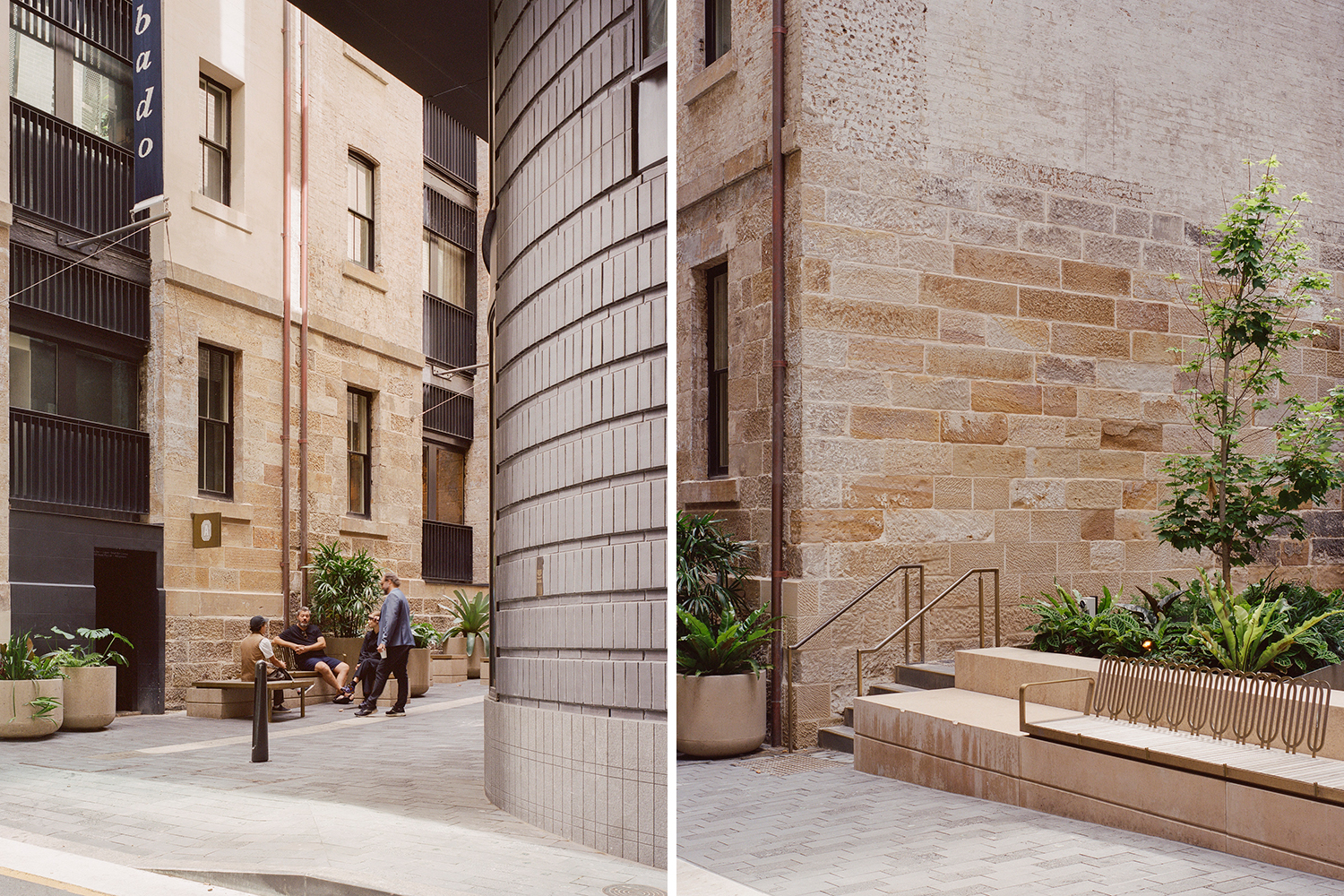Hinchcliff House
Carter Williamson with Mitchell & Eades
Australia
Hinchcliff House, a heritage-listed former wool store on Gadigal country in the Sydney CBD, has been restored as part of the Quay Quarter Lanes project. Originally a wool store, it has also been used as a hostel for the homeless by the St Vincent de Paul Society, as a chapel, and as a university campus. Now, the iconic sandstone structure has been restored to its former glory.
The design approach celebrates Hinchcliff House’s storied past while ensuring it is equipped to act as a versatile building for at least the next 100 years. The building is now accessible and fit for purpose across a range of disciplines including retail, hospitality, and office use; a blank canvas for future tenants. A handful of additional flourishes elevate the building for modern use, without disrupting its heritage character. All new perforations and interventions are delineated with thin black steel elements, inspired by part of the site’s former use as a blacksmith’s workshop. These steel forms – stairways, window and door frames, services, etc. – feature subtle curves reminiscent of the rounded cube shapes of the wool bales once stored here. The freestanding stair and lift pod act as the main points of circulation.
Ground floor eatery Grana channels the building’s industrial past. A continuous serpentine counter, custom-built and finished with resin, connects both sides of the building, providing constant theatre for diners; fresh pasta being made, flour being milled in situ, and coffee and pastries being prepared. Earthy, muted tones and warm timber furniture provide a humble backdrop to the hospitality on display.
Upstairs, Lana’s menu focuses more on fresh seafood. The subsequent palette shares the same bold undertones, but is more refined, packed with soft reds and pinks. The space centres around its knock-out feature – a long, pink, marble bar.
Basement bar Apollonia is home to old-world romantic escapism, embracing moody lighting and dark timber to create an imagined Sicilian bandits’ drinking den, and an homage to The Godfather’s Apollonia Vitelli-Corleone. Negronis are served across a bar crafted from an extraordinary spectrum of coloured marble.
Truly successful design is dependent on a commitment to a shared vision and collaboration between all stakeholders. With attention to detail at the fore, Hinchcliff House has become a space to break bread and celebrate uniquely human values; kindness, joy, laughter, and connection.
Furniture: Custom made timber tables by CDF studio, Matiazzi, Hay. Finishes: Custom artisan plaster by Di Emme Studio, Instyle. Fittings & Fixtures: All soap dispensers & bag hooks by Henry Wilson.
Photography: Jiwon Kim (1, 2), Rory Gardiner (3, 4), Phil Noller (5).




